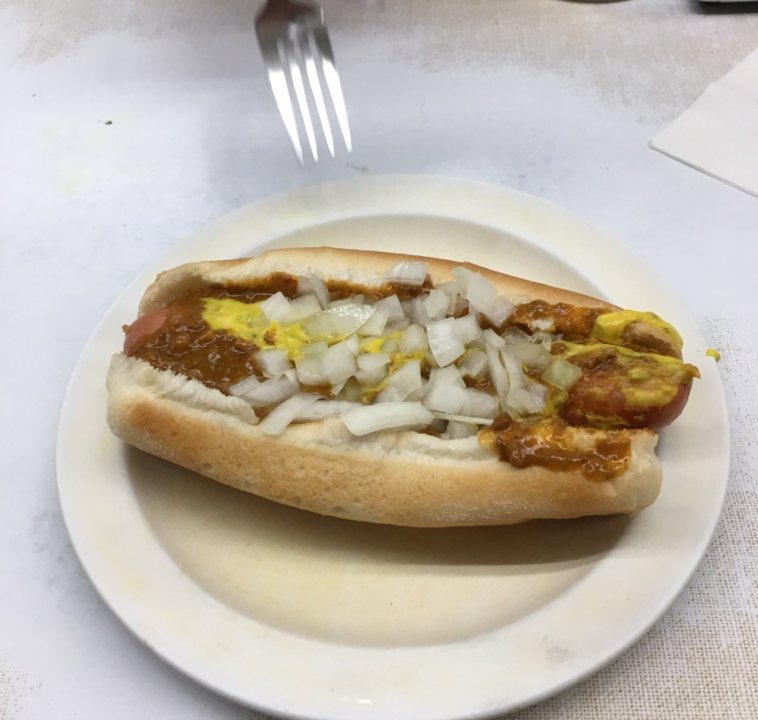
This happens to be all the time when I’m on the road. When I visit a city with real character – a distinctly unique place – and I walk into a restaurant or coffee shop, it’s not usual for the waitperson to ask, “You’re not from here, are you?”
They can tell if you’re a local – by how you’re dressed, how you talk, or if you ask what a beef on weck or a po’boy is. Here in Detroit, it’s a coney island. (For the uninitiated, the latter is a hot dog drenched in a special chili, onions, and mustard – or “a coney with everything”) as pictured above. You come to visit me, and over the course of a couple days, we’ll go to the Motown Museum, the Detroit Institute of Arts, Greenfield Village, and Lafayette Coney Island.
But not American Coney Island.
You see, these two competing joints that offer the ultimate Motor City delicacy are right night door to each other. Their short order cooks are in the front window, making up orders that usually take less than 60 seconds to hit your table after you order them. If you stand outside and watch this process, they’ll wave you in. It’s competitive between these two places – neither will put up with losing a customer to the other.
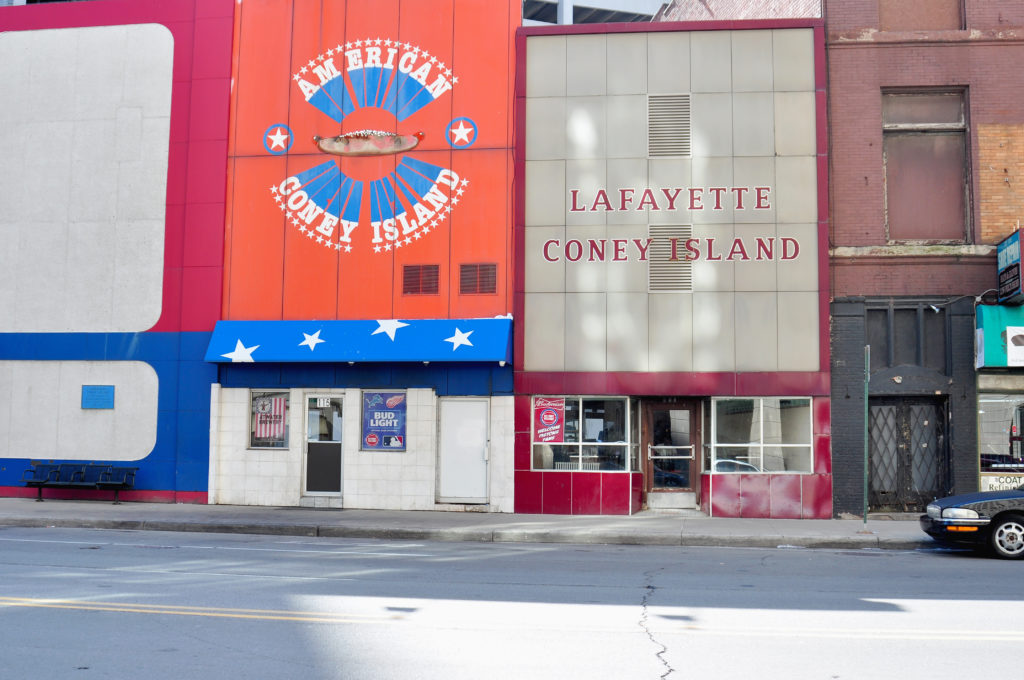
But here’s the thing you may not know. Lafayette and American were both started by members of the Keros family nearly a century ago. And the “rivalry” Lafayette and American is more in the heads of Detroiters, who have always chosen sides. You’re loyal to one or the other – like the White Sox or the Cubs, Michigan State or Michigan.
Me? Lafayette all the way. I’ve never set foot in American. You meet someone from Detroit, you’ll quickly learn their coney island allegiance.
Yes, it’s another post about the power of local, a topic that seems in radio circles much like the mask mandate debates here in the U.S. – a fundamental part of who we are, what we do, and what we believe.
Part of my ongoing case for a focus on local has been misunderstood, and perhaps some of that comes down on me for not being as clear as I should be about the definition of the term for radio stations, whether they’re in Milwaukee, Missoula, or Mendocino.
So, let’s be clear.
You can be an intensely local radio station, even if you have a syndicated morning show and/or voicetracked talent during your program schedule. The distinction lies in both the quantity and quality of how much remote talent you have, and what you’re doing the rest of the day. You can have Bob & Tom on in the morning, for example, and a “tracked” night host, but have strong local talent in the middle of the day who fly the hometown flag.
 If you work at it, you can ensure Tom Griswold and his cast of characters know what’s going on in your town. You can write and produce drops and breaks that aren’t designed to fool anyone the show doesn’t originate in Indianapolis – but to sound like the show knows what’s going on today in Lansing, Watertown, or Bakersfield. And of course you can do the same with your night jock, beaming her voice in from hundreds of miles away.
If you work at it, you can ensure Tom Griswold and his cast of characters know what’s going on in your town. You can write and produce drops and breaks that aren’t designed to fool anyone the show doesn’t originate in Indianapolis – but to sound like the show knows what’s going on today in Lansing, Watertown, or Bakersfield. And of course you can do the same with your night jock, beaming her voice in from hundreds of miles away.
Yes, being local is about relevance. But it’s also about being connected to your station’s community. The competitive forces coming from the car dashboard, mobile phones, podcasts and smart speakers compel your station to think local as the antidote to national and global shows and platforms. Yes, there’s an audio renaissance afoot, but if you noticed, broadcast radio is barely participating.
The medium’s “backstage pass” to this party?
Local.
Local talent representatives (note I pluralized it) are integral to a station’s sound, along with its ability to show up in the community, as well as to fulfill sales obligations that require presence. Interns and a van will only get you so far.
I attended the Great Lakes Radio Conference here in Michigan back in the late 70’s when consultant Lee Abrams (pictured) launched the heavy metal syndicated channel, Z-Rock. Keynoting at lunch, Lee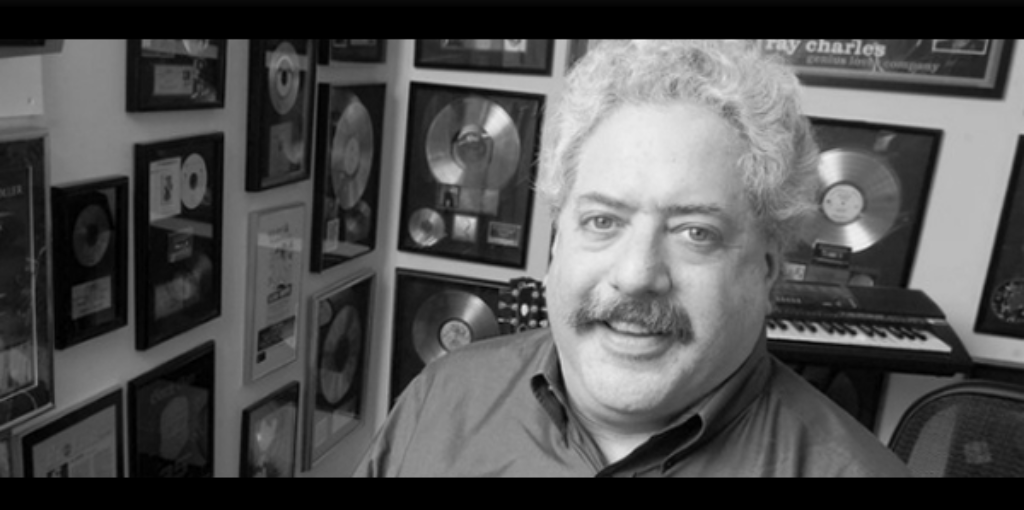 fielded a question from the crowd, “How can your new network really work when it’s not local.”
fielded a question from the crowd, “How can your new network really work when it’s not local.”
And to that, Lee responded, “I listened to your radio stations last night, and I went hours without hearing anything local. And reading the weather doesn’t count.”
Decades later, that is still often the case. Even though this conference took place years ago, I think about the implications of Lee’s statement. If you’re a local radio station and that’s part of your strategy, you’d better lean into it, not just check off the “local box” a couple times an hour.
If you hire our company to advise you on your programming, chances are good you’ll hear this theme – again and again. In fact, I have a device I use when monitoring client stations:
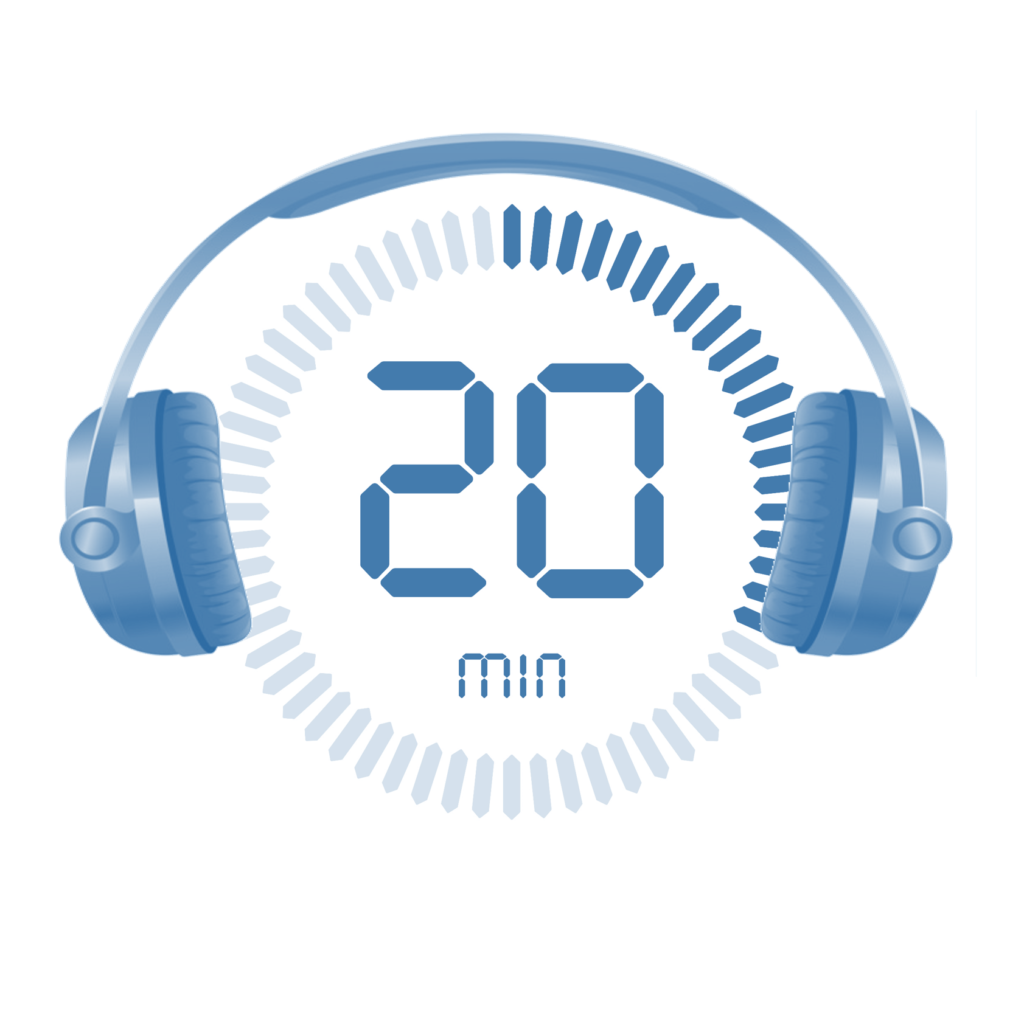 “The 20 Minute Test”
“The 20 Minute Test”
That means that throughout the day, I should be able to answer the following questions this way:
Do I know where I am? YES
That is, is it obvious when I’m listening that I hear a clear indicator of the community a station serves? And no, traffic and weather reports don’t count, unless your station is covering a unique meteorological or mobility issues or emergencies. I should know the city I’m in (or streaming in) after just a quarter-hour or so.
Do I know what you’re talking about? NO
Is there a promo, reference, or break where the station is talking about something that makes no sense to me? Am I hearing references to local people, places, issues, jokes, and other content that sound foreign or even a bit confusing? Hopefully so, because a key to enjoying your show is that I have to be from there (or at least that would help).
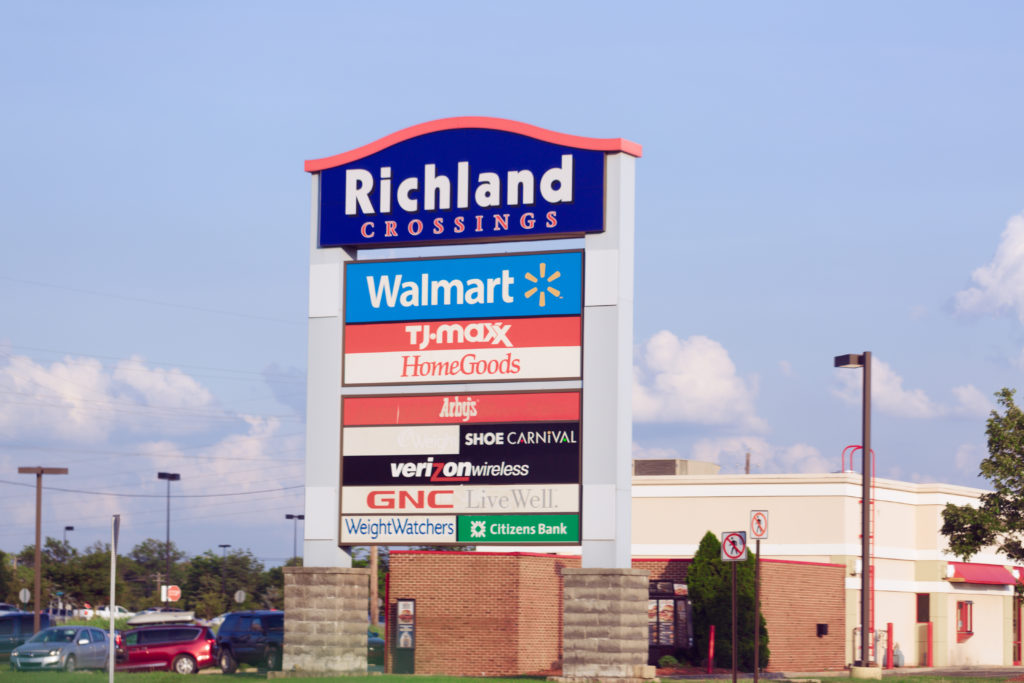 Most cities and towns are America have become homogenized. They feature the same stores, the same strip centers, and the same malls. That’s why when independent stores spring up – restaurants, bars, coffee houses, record stores – many of us rush to support them. It’s the same with local landmarks, arts centers, and holidays. Celebrations of hometown businesses have become commonplace in recent years – and why not?
Most cities and towns are America have become homogenized. They feature the same stores, the same strip centers, and the same malls. That’s why when independent stores spring up – restaurants, bars, coffee houses, record stores – many of us rush to support them. It’s the same with local landmarks, arts centers, and holidays. Celebrations of hometown businesses have become commonplace in recent years – and why not?
And as far as radio’s concerned, these businesses are and will continue to be the lifeblood of radio’s financial future. The health of the retail community may very well dictate the medium’s ability to stay viable and sustainable.
I’ll give you an example. Late last week, there was a major announcement here in town that captivated on social media. You talk about “watercooler” talk? This was it. And it involved two words:
PINE KNOB
Now, if you’re from here or lived here for any length of time before 2000, you’re smiling. For the rest of you, here’s the story.
Pine Knob was the first “shed” we had here in Metro Detroit. Located in Clarkston (about 20 miles north of downtown), Pine Knob was a ski resort in the winter, and a wonderful concert venue in the summers since it opened in 1972. Detroiters can tell you the stories of the greatest concerts they’ve ever seen. For me, Bob Seger, J. Geils, Journey, Steely Dan, Paul Simon, and the Doobie Brothers are just a few of the standouts, not to mention a slew of station events and festivals, like the WRIF Motor City Jam that took place at this iconic shed. 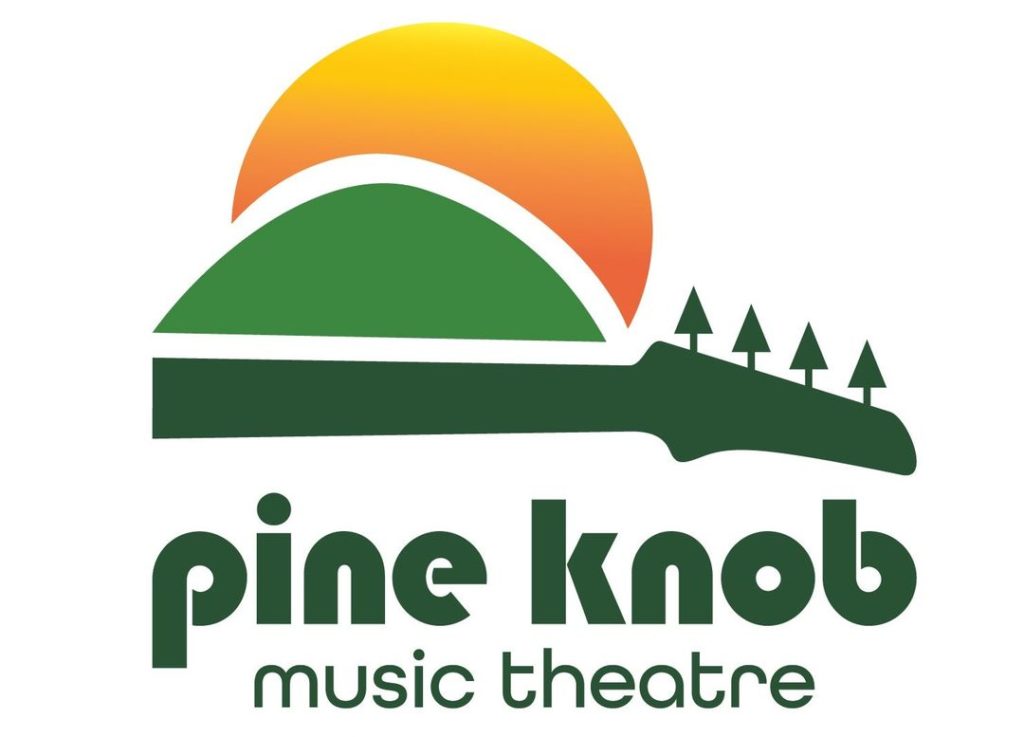
In 2001, its name was changed as the corporate sponsorship trend took hold, stripping stadiums, arenas, and concert venues of their time-honored handles. Pine Knob became the DTE Energy Center, branded for the region’s energy utility company). For music fans, it was a case of identify theft. And for the last two decades, locals have defiantly referred to the venue by its original handle.
So, when it was announced last week, that Pine Knob’s parent, 313 Presents, was taking back its maiden name, there was rejoicing all over the city. And, of course, on social media.
The memes came quickly over the weekend, all in that code only Detroiters understand. But that’s part of the appeal of local – knowing something fun, special, surprising, or controversial that others just can’t understand:
It’s a secret handshake that is a reminder that cities, communities, and regional differences matter. And if you’re a music lover who began attending concerts in the 70’s, 80’s, and 90’s, the resurrection of Pine Knob is a sort of cultural reward, especially given the COVID protocols during the past two summers. This year also marks the 50th anniversary of the venue, an apt occasion for it to return to its roots.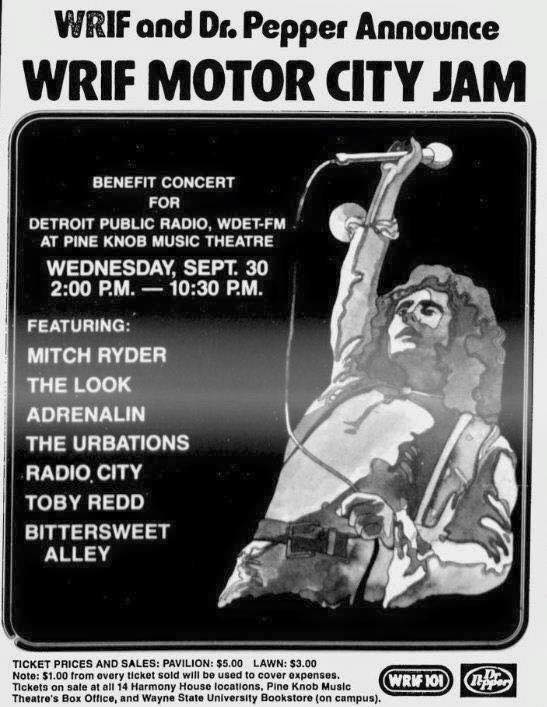
Among Detroit area natives and those who have moved here, the social media activity has been steady and positive. Memories came flooding back online, especially supported by radio stations attuned to the local zeitgeist.
The patron saint of Pine Knob was the late Eddie Money. The “Money Man” was Pine Knob’s season opener for many, many years. Other fans recalled their greatest night(s) at Pine Knob.
No, a local lighting rod issue like the return of a beloved music gathering place doesn’t happen every week.
But in so many metros, there are driving issues, events, and news stories cropping up regularly that are relevant, top of mind, or nostalgic, offering local radio stations and their personalities an opportunity to tug on those hometown heartstrings.
WRIF & Pine Knob both
50 years of Rocking You!#WRIF50 #Pineknob pic.twitter.com/ZusWIeLVdm— (Screamin’) SCOTT RANDALL WRIF (@screamin1) January 16, 2022
In the last couple of weeks, we have interviewed local television general managers in large and medium markets. When the conversation rolls around to their aspirations for the new year, their strategic thrust turns to embracing the local vibe. They recognize how the past two pandemic years have shifted the focus to what’s happening in town. And they also concede that many streaming platforms, from Netflix to Hulu to Disney+, provide a level of entertainment they cannot possibly compete against. Therefore, their best opportunity is to own local.
Similarly, our trip earlier this month to Las Vegas to CES was an opportunity to interview auto execs, including those whose specialty is marketing. As our questions revolved around infotainment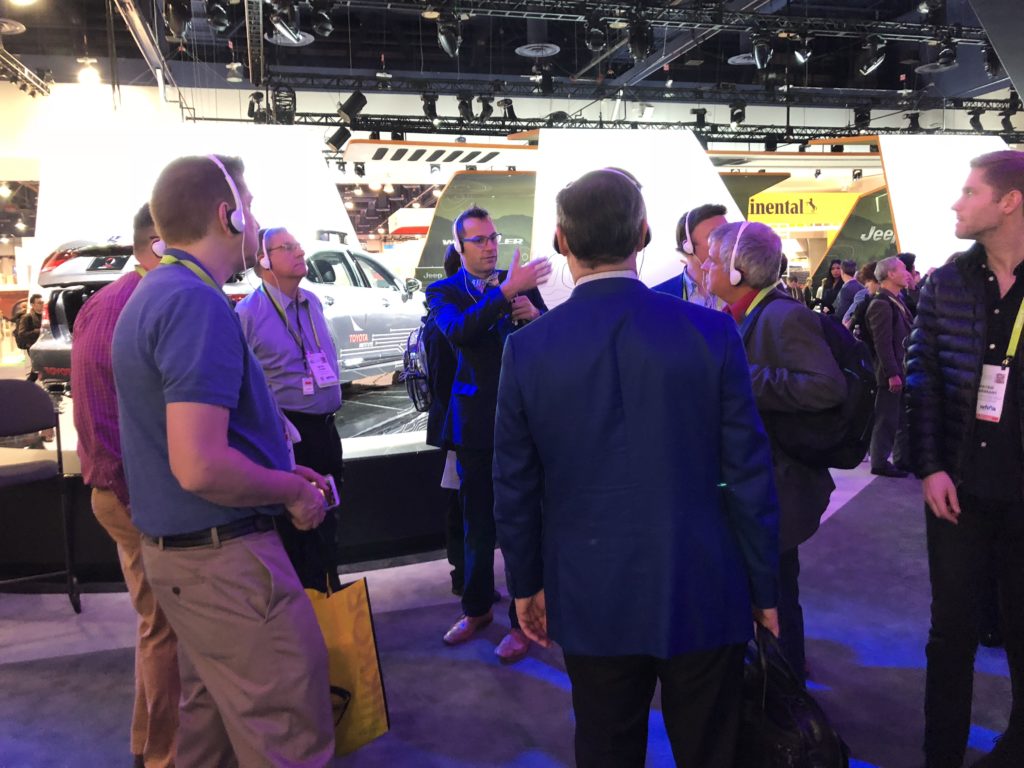 systems in the dashboards, we asked about broadcast radio’s future in their cars, as well as what the medium will need to do to stay relevant.
systems in the dashboards, we asked about broadcast radio’s future in their cars, as well as what the medium will need to do to stay relevant.
And their responses are always the same – make sure your content is relevant and local.
No, TV managers and auto execs aren’t radio programmers. But they are bright, logical, and pragmatic people who understand the fundamentals of competitive battlegrounds. Each industry is as dog-eat-dog as radio.
This notion of holding up the mirror to the local environs is not new. It’s a 100 year-old strategy that dates back to Marconi. Radio managers and owners through the ages have battled the onslaught of television, and later 8-tracks and cassettes, and now the Internet tsunami – audio streaming, podcasts, and SiriusXM to name just a few. And soon, video content in cars will be a thing, as screens multiply, widen, and offer a great experience (at least to passengers).
And this is not just a commercial radio conversation. In the public radio sector, the debate will no doubt heat up this year, especially as stations continue to question where the next hit show will come from. As NPR struggles to define its programming focus (shows, news, podcasts), local public radio stations are faced with answering the question, “Just how local are we?”
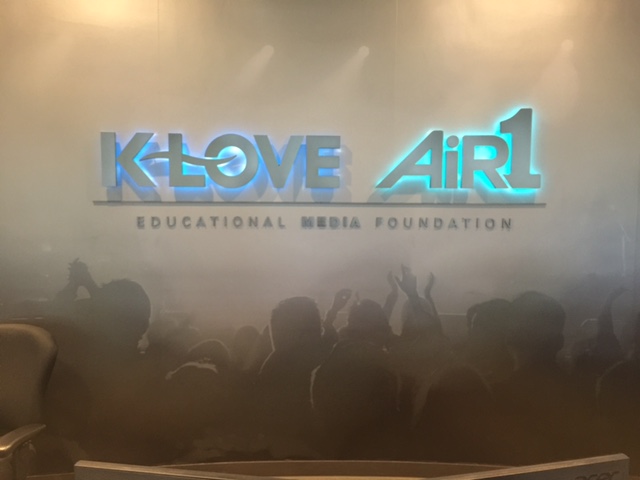 On the Christian music radio front, the sector is dominated by networks K-LOVE and Air1, owned by EMF. For the unaffiliated, as it were, success will be hinged not on the Christian music playlist, but on station personalities, and reflecting the local spirituality of the community and its ethos. These are great networks, so independent stations are challenged to provide their own unique values. Logically, they will be locally-driven.
On the Christian music radio front, the sector is dominated by networks K-LOVE and Air1, owned by EMF. For the unaffiliated, as it were, success will be hinged not on the Christian music playlist, but on station personalities, and reflecting the local spirituality of the community and its ethos. These are great networks, so independent stations are challenged to provide their own unique values. Logically, they will be locally-driven.
I have no doubt that both public and Christian music stations will be grappling with these questions over the next several years, with a renewed focus on strengthening their hometown ties, locally produced programming and content, and community efforts and initiatives.
In every S.W.O.T. analysis we conduct, and strategic plan we collaborate on, the question comes down to “What can we own that has value, durability, and will stand the test of time.
You don’t have to be from “around here” to answer that question for broadcast radio.
Thanks to Sandy Kovach, Scott Randall, & Brian Pastoria.
- Media And Technology In 2025: Believe It Or Not! - April 18, 2025
- In Radio, You Just Never Know - April 17, 2025
- The Secret To Making A Great Podcast (And Great Radio) - April 16, 2025




LOCAL means signal area, songs, bands, people, news, information, weather, sports, foods, places, activities, culture, public service. It works from home studios and voice tracks. Not much cost, just constant connection with the audience. Great week starting stimulator. Thank you, Fred.
Spot on, Fred. And while we’re on the topic of signal area (h/t Clark), here’s a pet peeve: Unavailability of frequencies that a locally oriented broadcaster would take advantage of but can’t, because some national syndicate-owned station that’s painfully, clearly nonlocal is squatting on it. Oh, sure, they run a few liners every hour pretending they’re local, but anyone paying attention knows the emperor has no clothes. Grrr.
Thanks for chiming in on this one, Clark.
A vote for Lafayette from this Detroit native. As for local…as a public radio station overlapped by a statwide network, it is essential. It’s not just in our name. You hear and see our engagement with the institutions that make our community special to the people who live here.
Lafayette always had a grungy, genuine feel to it. Thanks for checking in.
I’m with Jay, Lafayette all the way!! Once again on the mark. Well thought out my friend.
Thanks, Jay.
FJ:
I read your blog daily. Today’s, again scores A+. To your point, Dr Pepper is a Texas drink first served in Waco 1885 and does NOT have a ‘period’ between DR and Pepper in its logo as displayed in your vintage WRIF poster above. How’s that for local-ism.
Mark Grubbs
Ranch Radio Group
Oh, and everything in Texas is a ‘coke.’ Dr Pepper ‘coke’ And since they killed off the Dublin Dr Pepper, it’s dead to me.
Had the luxury of working with Lee at SMN during the Z Rock years. I think Lee would have said that if you’re a national format, sound like it. Make it sound national, big, because that’s what you are. Use the advantage, don’t pretend you’re something you’re not. If you’re local, you better take advantage of it.
BTW: I never understood why Detroiter’s called them ‘coney islands.’ It’s a chili cheese dog. Take the D train to Coney Island, walk up to Nathans on the boardwalk and order a ‘coney island’ and they’ll give you a sideways, cocked head doggie befuddled look. It’s a chili cheese dog. Besides, everyone knows the best chili cheese dogs are at Stewarts in NJ. I personally preferred the one in Hazlet. Just ask Tony Soprano.
You are absolutely right in your first paragraph, John – that is exactly how Lee played it. When you’re a network, you act big and you don’t try to be something you’re not. But when you’re local and lean into it, you can do amazing radio.
As for the origin of the term “coney islands,” it’s a mystery to me, too.
Well done. Thank you.
You’re welcome.
Last week I wrote an article about how the 2 large Colombian radio networks broadcast, in the early 1980s, the Tour de France from the roads, live, and with the use of small planes to relay the signal (https://bit.ly/3FDz4hn).
No one else would think of broadcasting live every stage of that race, from start to finish, from the roads, next to the cyclists, where the action is.
In that article I commented on a fact that clearly reflects the strength of the local.
I was talking about the Vuelta a Colombia, another cycling competition from which great Colombian cyclists came out and competed in different international competitions, winning the Giro d’Italia, La Vuelta a España and the Tour de France.
In its beginnings, the Vuelta a Colombia, a cycling race that has been held every year since 1951 and that runs through much of the country, was a competition between regions.
Each city made up one or two teams of cyclists, who ran representing their citizens. The fervor was impressive and tens of thousands of people crowded the streets of each town to see their idols arrive.
There were cordial fights between inhabitants of the different cities who supported their fellow citizens in the race.
Later, the directives of the competition decided to commercialize it. Now the cycling teams would not be representing a city or a region but a commercial brand.
This led to the public losing fervor for the competition, little by little the crowds faded and interest in the race was lost.
The cyclists went to live in Europe, where they continue to reap great triumphs, but now Colombians have not returned to the streets to see their local stars.
That clearly reflects the importance of the local, as you describe in your article. Good reading. Thanks!
When you are ear is close to the ground in your market, it’s not hard to know what fascinates the locals. In the expanding world of audio, it is something only radio can do. Congrats on tapping into it, Tito.
Loved everything you said Fred, especially TWO things close to my heart…Coney Dogs and B&T! The Lafayette Coney Island hot dogs are as unique to Detroit as Buddy’s Pizza and even though others TRY to replicate the taste, they usually fall short. Thanks also for finally recognizing the entertaining style of The Bob & Tom Show. Even with Bob retired about 6+ years ago, the show is funny, irreverent and I wish a station in Detroit would have brains enough to add it to their schedule.
Art, I knew a Detroit radio guy like you would enjoy today’s post. I agree about the B&T Show – they’ve evolved and adapted. Affiliates would be wise to arm Tom, Kristi, Chick, Josh, and the rest of the cast with great local content from their home markets. Just because you have a syndicated morning show doesn’t mean your station cannot be both local and relevant. Thanks for commenting.
And, if you’re indeed from Milwaukee, you probably have an unalterable favorite among the Big Three local frozen-custard stands: Leon’s, Kopp’s, and Gilles…
https://www.wuwm.com/regional/2017-06-09/what-makes-milwaukees-frozen-custard-scene-special
(Even though I’m from Madison instead, I can say that Culver’s isn’t really the same–nor are the stands around St. Louis, such as Ted Drewes. Also, anyone who immediately understands the reference behind the source article’s “Bubbler Talk” name is a true Sconnie.)
During my time with the KLH/Hog crew, it was Kopp’s. Great summertime treat.
Fred,
You might add the Buddy’s vs Shields legendary origin of the Detroit Style pizza.
Team Buddy for me. Next time in Detroit, I’ll spot you one at the Farmington Hills location.
Buddy’s here as well. Please visit soon. Hope you and the family are doing well.
Let me treat you to a coney at my dad’s place next time I’m in town—hopefully next summer, when the Detroit Jazz Festival is in-person again.
I’ll take you up on that, Leslie. Hope I got the history right. Thanks for commenting.
Excellent article. Right on point. A D.J. who opens the mike and tries to sound local when he’s hundreds or even a thousand miles away is committing what I call broadcast fraud. If you’re not actually in the general area of where the station is licensed then you cannot really relate to your audience. You don’t know the local streets, the local businesses or the places where the local people like to hang out. Radio suffers from what I call Generic Emptiness. “Hey, I’m here but I’m really not.” It’s like telling your listeners that you are eating at a five star gourmet restaurant but in reality you’re sitting at a Taco Bell.
An interesting POV, Curt. I have espoused that a well-prepped jock can at least relate better, but I appreciate your take on this. And I love the term, “Generic Emptiness.” That describes much of radio today. Thanks for chiming in.
I’m gonna’ chime in one more time on this one. I remember reading an interview with Producer/Musician T Bone Burnett a few years ago. He talked about early rock and roll and R n B records and how different record labels had a different sound. He expanded that it wasn’t just the ‘equipment,’ it was also geography. Chess sounded different from Capri. Sun had a different sound from Del-Fi or Motown. Sure the musicians mattered, but it was more than that. Each location of the studio had different humidity, temperature, pollen, etc and all that contributed to the sound. T Bone noted that today, it all sounds homogenous cause it’s all being created in a sterile computer. The feeling of the city(s) is gone. Same lesson for radio. To sound like a community, you have to be a part of that community, and then it takes time/practice and coaching to learn how to communicate that ‘feeling’ through the mic. Hardest place to communicate community was in my ‘hometown’ of the Miami/Fort Lauderdale Metro. Everyone there is from somewhere else. It’s the end of the railroad line.
Late to the party here, but radio just doesn’t have the number of people to really sound local without being it. Local references aside, WDVE doesn’t play The Clarks anymore and WNCX stopped playing Michael Stanley. Clearly, whoever is programming those stations hasn’t spent much time in either place as both of those acts are huge in their respective cities. And its not as though they had to find those artists and songs, they just had to leave them there.
If you can’t leave 5 Michael Stanley tracks, you don’t have the people to consistently make a station sound local remotely. To much happens too spontaneously for that to work with a small centralized staff and the trend is headed for more centralization, not less. Abdicating one of the key elements that research repeatedly signals as a key reason people listens to radio at a time when competition is getting better and more plentiful seems almost cartoon silly, but that’s where radio seems to be.
referencing Paul’s column last week about the trow dropping school of radio sales, maybe that’s just market forces valuing radio as they should.
You can’t unsee the “trou dropping” post. I still hear some strong local radio stations, Bob, and you know their names. But I can’t argue they are increasingly fewer and farther between. Thanks for commenting on this.
Great piece Fred. Thanks for doing this every day. It’s a commitment that I really admire.
I know I’m a nostalgia nut in some ways but “back in my day…”
5 of my most important years in my broadcasting journey were at WBT in Charlotte, about to celebrate it’s 100th anniversary. The community was IN THE LOGO when I was there. 1110 WBT, “Charlotte: Someplace Special”. And we hit local so hard back then (for me 79-84). I was Sports Director (a local portal that most stations ignore now) and morning show co-host much of the time. All the jocks did local so well that even though other stations had flashier, funnier, talent from time to time, WBT’s expertise at local kept them on top.
With the introduction of Rush L. there and partisan talk (WBT tried RIGHT and LEFT on the air at once at times), the station became a community divider, as was the case for many legacy AM stations trying to survive. Most of them made big bucks in the interim doing that but, in my view, they all sacrificed so much that many of them wish they had again. It’s honestly one of the saddest things for me to grapple with when I look back at the radio trends of my time in the game.
I’m wondering if some stations, since Rush’s passing, are trying to reclaim local a little more in this new environment and ditching the divisive talk. What are you hearing Fred?
I’m not hearing a skew to local – just more personalities saying a lot of the same old things.
Paul, I appreciate the kind words. Means a lot.
When companies can/will pay for local people, then and only then will this change.
And that won’t happen until there’s acknowledgment that local indeed matters.
Great piece highlighting the obsession with *local* in media. Btw…yes on Lafayette, even from this outsider.
I won’t soon forget, maybe 10 years ago a local (name withheld) new morning show person hit town and referred to the big local state university with an “M” in it. Those in university towns will relate. This could be UM, MU, U of M, “the so and sos” or whatever. New-guy proceeds to refer to said institution as “university of M”. (in our case it’s U of M). Well, he got it half right, and social media ate his lunch. It is so easy to immerse, and do the research of one is truly interested in being local. But being sloppy even for a moment, gets punished by our audiences big-time.
Indeed Tim. Those moments scream “NOT FROM HERE.” And audiences rarely forget those hometown transgressions. Thanks for the comment.